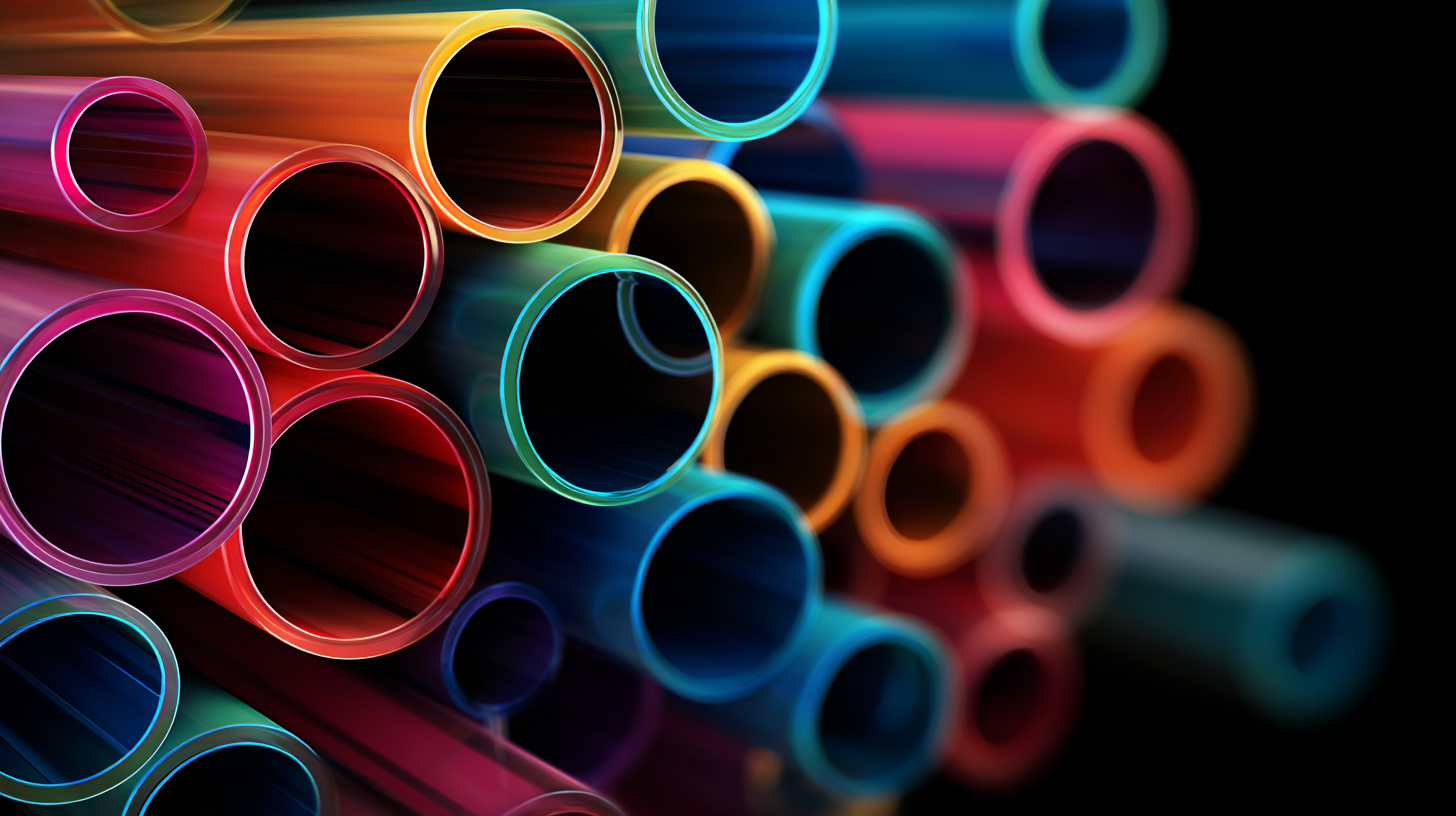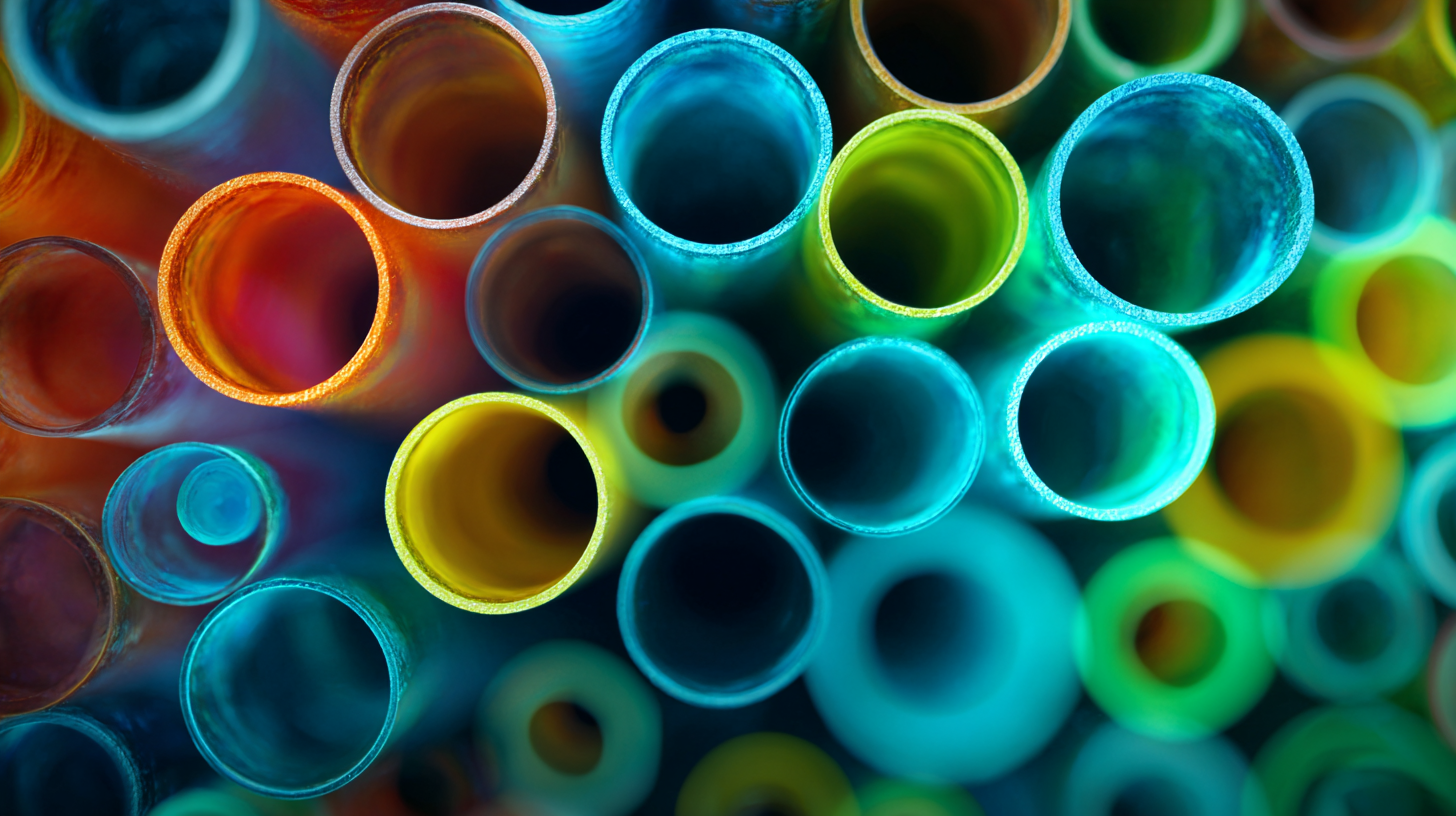
Exploring the Future of Best Plastic Tubes Technologies in 2025 and How to Leverage Them
The rapid advancements in the plastics industry have significantly influenced the market dynamics of plastic tubes, which are projected to reach a staggering value of USD 1.64 billion by 2025 according to a recent report by Market Research Future. This growth is driven by the increasing demand across various sectors, including healthcare, packaging, and construction, where durable and lightweight materials are paramount.

As businesses strive to enhance their competitive edge, leveraging state-of-the-art plastic tube technologies is essential, particularly in optimizing after-sales services and minimizing maintenance costs. This blog will delve into the future landscape of plastic tube technologies in 2025, examining innovative solutions and strategies that can amplify operational efficiencies while addressing customer needs effectively.
By understanding these trends and embracing the upcoming advancements, companies can not only meet but exceed the evolving expectations of their clientele.
Innovations in Plastic Tube Materials: A Look Ahead to 2025
As we look ahead to 2025, the innovations in plastic tube materials are set to redefine the industry landscape. With the global pharmaceutical plastic packaging market projected to reach USD 681.33 billion by 2034 and an impressive CAGR of 16.39%, the demand for advanced plastic tubing materials is surging. This growth reflects a broader trend in the plastics industry, where sustainability and performance take center stage. Innovative materials that enhance durability, sustainability, and functionality in plastic tubes are critical for industries ranging from pharmaceuticals to construction.
Notably, initiatives focusing on waste reduction and sustainable packaging are gaining momentum. Events such as the Plastics Industry Association's 2025 Plastic Sustainability Innovation Award highlight the significance of recognizing and supporting innovations that prioritize environmental responsibility. As manufacturers and innovators come together at platforms like CHINAPLAS 2025, emerging technologies in plastic tube production will focus increasingly on reducing plastic pollution. This focus not only aligns with global sustainability goals but also meets the evolving demands of consumers and regulatory standards in various sectors.
Emerging Manufacturing Techniques for Plastic Tubes: What to Expect
As we look towards 2025, the manufacturing techniques for plastic tubes are evolving rapidly, driven by innovations in extrusion technology and a growing emphasis on sustainability. The new generation of plastic extrusion machines emphasizes energy efficiency, significantly reducing power consumption through optimized hot and cold processes. This enhancement not only lowers operational costs but also aligns with the rising demand for eco-friendly manufacturing practices.

The global recycled plastics market is projected to skyrocket, with an estimated value of USD 96.48 billion by 2030, indicating a robust compound annual growth rate (CAGR). This surge presents a vital opportunity for manufacturers to incorporate recycled materials into plastic tube production, thereby meeting consumer demand for sustainable products.
Additionally, with biodegradable plastics expected to reach USD 33.52 billion by 2029, manufacturers will need to innovate their techniques to adapt to these greener alternatives, ensuring a shift towards more sustainable materials and processes in the plastic tube industry.
The landscape of plastics manufacturing is transforming, with newer methodologies such as 3D printing gaining traction. These advancements promise to optimize production efficiency while responding to the ongoing challenges posed by plastic waste. As emerging manufacturing techniques continue to develop, stakeholders in the plastic industry must remain agile and invest in technological innovations to thrive in this dynamic market.
Sustainability in Plastic Tube Production: Trends Shaping the Future
As we look towards 2025, sustainability is becoming a crucial factor in the production of plastic tubes, particularly in the HDPE packaging sector. According to recent market analyses, the global HDPE packaging market is projected to grow from $18.9 billion in 2024 to $19.9 billion in 2025, and further to an impressive $27.25 billion by 2032. This increase highlights not only the rising demand for plastic products but also the urgent need for eco-friendly practices in their production.
The movement towards sustainability is also evident in the recycling market for HDPE, which is expected to expand significantly. By 2032, the recycled HDPE market is forecasted to grow from $19.44 billion in 2025 to $33.99 billion, demonstrating a compound annual growth rate of 8.3%. The automotive industry is a significant driver of this trend, with demands for materials such as polyvinyl butyral (PVB) further supporting sustainable practices. With the market expected to surpass $4.1 billion by 2024, this reinforces the importance of leveraging recycled and sustainable materials in manufacturing.
As industries navigate these advancements, embracing new technologies and materials will be essential. Companies that prioritize sustainability in their supply chains, such as by utilizing more recycled materials and reducing greenhouse gas emissions, will position themselves competitively in this evolving landscape. The move towards sustainable production practices not only meets consumer demand but also aligns with broader environmental goals.
Applications of Advanced Plastic Tubes in Various Industries by 2025
As we look toward 2025, advanced plastic tube technologies are set to revolutionize various industries through enhanced performance and versatility. In the medical field, for instance, the development of sterilizable and biocompatible plastic tubes will enable safer and more efficient delivery of fluids and medications. This innovation not only improves patient outcomes but also streamlines manufacturing processes, reducing costs and enhancing the overall quality of care.
In the realm of construction and engineering, lightweight and durable plastic tubes are becoming essential in applications ranging from plumbing to structural supports. These tubes, resistant to corrosion and environmental factors, provide sustainable solutions that meet the growing demand for eco-friendly materials.
The automotive and aerospace sectors, too, are embracing advanced plastic tubes for fluid transport and lightweight components, contributing to energy efficiency and reduced emissions in vehicle designs. As these applications expand, the potential for growth and innovation within these industries will be significant, making strategic investments in advanced plastic tube technologies a priority for forward-thinking businesses.
Strategies to Leverage New Plastic Tube Technologies for Business Growth
As we look towards 2025, the landscape of plastic tube technologies is evolving rapidly, offering innovative solutions that businesses can leverage for growth. One strategy is to embrace advancements in biodegradable materials. By incorporating eco-friendly plastic tubes, companies not only enhance their sustainability profile but also appeal to environmentally conscious consumers. This shift can result in increased customer loyalty and brand reputation, positioning businesses as leaders in responsible practices.

Another key strategy lies in harnessing smart technology within plastic tubes. Integrating features like RFID tags or sensors can provide businesses with valuable data regarding product usage and customer interaction. This data can enhance inventory management and streamline operations, allowing companies to respond swiftly to market demands. Additionally, such innovations can elevate the consumer experience by providing added convenience and personalization options, ultimately driving sales and customer satisfaction. Adopting these emerging technologies will enable businesses to remain competitive and responsive in a fast-changing market.






